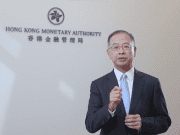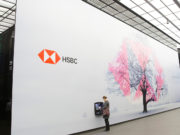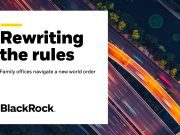What Investment Products Can You Place in Your Clients’ Portfolio?
Got an investment idea? Or want to tilt the portfolio to a more Asian-centric allocation? How do you execute that? Do you buy a portfolio of stocks or do you get into a few Unit Trusts? Do you consider using Exchange-Traded Funds (ETFs)?
Clients & Wealth Managers may have an idea of what seems like a great investment theme for the next 10 years. But knowing how to select, buy and monitor the investments can be more important than simply having a great idea.
Read More:
- The Eureka Moment for Financial Experts and Advisors
- Top 2 Products to build a Strong Relationship with Clients in Retail Banking
- 7 Key Investment Products in Personal Banking
We look at the range of investment products Wealth Managers and Advisors can place into their clients’ portfolio:
No. 1 Stocks / Shares

The most popular option for investors is to buy stocks / shares. Stock brokerages market stock-trading activities, complementing with analysis tools, insights, news and trends to generate direct investments.
Whenever there is a new Initial Public Offering (IPO), having a stock trading account is often a pre-requisite to participating in the IPO.
Advisor Access: Brokerages, Selected Banks, Private Banks, External Asset Managers, Selected Independent Advisory Firms, Online Advisory Platforms
Revenue Margin: Low, Depends on Volume
Pros:
- Direct Equity Participation
- Targeted Investments
- Eliminates Professionals Management Fees
Cons:
- Increased Monitoring
- Need to Participate in Corporate Actions
- More Resources to Build a Diversified Portfolio
No. 2 Unit Trust

Without the need to understand much about investments, getting into Unit Trust is the easiest way to invest without learning anything. You don’t have to worry about bid and offer prices because prices are delayed until closing, and thereafter an aggregating process to calculate the NAV … Net Asset Value – which is the value of the total dollar worth of the portfolio divided by the number of units.
Even if you do know a lot about investments, Fund Managers have unrivalled access to financial information and execution expertise that most clients and advisors do not have.
Advisor Access: Almost All Platforms
Revenue Margin: Low to High, Depends on Business Strategy
Pros:
- Professionally Managed Funds
- Access to almost all Global Investment Opportunities
- High Standards of Monitoring & Reporting
Cons:
- Expensive Investment Services
- Unable to Customised Underlying Securities
- Learn Little about Global Investments
No. 3 Exchange-Traded Funds
An increasingly popular investment product, Exchange-Traded Funds (ETFs) are constructed similarly to Unit Trust, but is listed on the stock exchange.
Most ETFs are passive, which means that the portfolio is usually tracked against a stock exchange index such as S&P 500 (United States) or Hang Seng Index (Hong Kong). Investors would be buying into the index at a lower management fee compared to professionally managed funds.
Advisor Access: Brokerages, Selected Banks, Private Banks, External Asset Managers, Selected Independent Advisory Firms, Online Advisory Platforms
Revenue Margin: Low
Pros:
- Low-Cost Access to Investment Theme such as Indexed Funds
- Easy to Buy & Sell on Stock Exchange, Similar to any Shares / Stocks Transactions
- Professionally Set-up
Cons:
- Unable to Customise Investments
- Usually Passive Approach (Such as Referencing to Index)
- Need to Understand the Risks & Structure of the ETFs
No. 4 Bonds & Fixed Income

Bonds & Fixed Income are a less common investment product in Asia, but hugely popular in Europe & America. This is partly due to the under-developed bond market in Asia and the larger issued denomination ($250,000).
Individual bonds are harder to manage in a small portfolio due to the need for diversification, monitoring and yield calculation. However, in a low-interest rate environment, the yield may not be able to offset the fees of a Professional Fund Manager, making direct investment an important option.
Advisor Access: Selected Brokerages, Selected Banks, Private Banks, External Asset Managers, Selected Independent Advisory Firms, Selected Online Advisory Platforms
Revenue Margin: Low to High
Pros:
- Simple Investment Product
- Able to find Bonds’ Issuers that Clients Prefer or Trust
- Most Bonds Comes with Regular Coupon Payout
Cons
- Require Large Capital due to Larger Issued Denomination or to Diversify
- Lack of Price Transparency & Understanding (Coupon, YTM, Duration etc)
- Need to Monitor Credit Risks, Coupon, Yield and Maturity
No. 5 Structured Notes or Certificates
Structured Notes are highly customised investment structures. They are used to manage returns and risks, according to the investment objective. The most common Structured Notes are Equity-Linked Notes or Currency-Linked Investments. Structured Notes are not plain-vanilla instruments. This means they are not direct investments but integrated using a combination of financial instruments such as underlying securities and / or derivatives. Insurance Product is an example of a structured product that includes insurance on life, riders, investments returns, vested profit-sharing.
More sophisticated Structured Notes would be Leveraged Investments into Oil Prices or S&P 500 Index, Accumulators (a series of calls and put options in buying or selling the underlying investment), Interest Rate Swaps Agreement.
Advisor Access: Selected Brokerages, Selected Banks, Private Banks, Investment Banks, External Asset Managers, Selected Independent Advisory Firms, Selected Online Advisory Platforms
Revenue Margin: Low to High
Pros:
- Highly Customisable to Managed Risks and Returns
- Able to Construct the Note to Express Different Investment Views
- Able to Preset Parameters such as Maturity, Yield Pay-off or Capital Gains
Cons:
- Unable to Change Structure Notes’ Parameters
- Not Easy to Get Pricing and Market Valuation
- Credit Risks of Issuers
No. 6 Derivatives: Options & Futures

Derivatives are financial instruments that derives the outcome from another. Options and Futures are the most common derivatives. They are pegged to underlying financial instruments such indices, individual stocks, bonds, commodities, interest rates, foreign exchange or any investments that might have a market price.
Increasingly, many Hedge Funds construct the portfolio using only Options & Futures, leaving a large capital (sometimes more than 90%) unused. In turn, the portfolio has low volatility and risks. For Clients & Advisors, Options and Futures allow concentrated bets or views (tactical) to be constructed without needing to re-allocate a large pool of capital in the portfolio.
Advisor Access: Selected Brokerages, Selected Banks, Private Banks, Investment Banks, External Asset Managers, Selected Independent Advisory Firms, Selected Online Advisory Platforms
Revenue Margin: Low to High, Depends on Structure and Volume
Pros:
- Small Capital Outlay
- Allowed for Highly Leveraged Positions
- Hedging or Risks Management
Cons:
- Requires Strong Financial Knowledge
- Lack of Pricing Information
- No Real Equity Ownership (Ownership of Underlying Investments)
No. 7 Investment-Linked Policies
Investment-Linked Policies are Insurance Policies with either Investments as a primary or secondary objective. The policies allow clients to have participation in selected investments opportunities, either decided by the Insurance Company, Advisor or Client.
Traditionally, Insurance Companies distribute returns via profit-sharing on the policies. The profit-sharing comes from long-term investment returns and below expected claims payout. The allocation of Investment-Linked Policies are attractive due to the insurance coverage, which usually payout more than the capital in the event of Death or Total Permanent Disability.
Advisor Access: Selected Brokerages, Selected Banks, Selected Private Banks, Independent Advisory Firms, Selected Online Advisory Platforms, Insurance Companies
Revenue Margin: Medium to High
Pros:
- Participation in Investments with Insurance Coverage (Estate Planning Benefits)
- Simple and One-Stop Investment & Insurance Product
- Certainty on Minimum Insurance Payout Independent Of Investment Climate
Cons:
- Additional Cost of Insurance Embedded in Policy
- Terminating Investment Means Terminating Insurance Coverage
- Less Investment Options Compared to the Above Options (No. 1 to No. 6)
Read More:
- The Eureka Moment for Financial Experts and Advisors
- Top 2 Products to build a Strong Relationship with Clients in Retail Banking
- 7 Key Investment Products in Personal Banking
Related Articles:
- 8 Reasons Why Building a Portfolio is Tough in Asia
- 11 Interesting Strategies to Advice Clients
- Most Popular Investment Theories Clients Ask Wealth Managers
- How Do You Start Advising Clients in Your New Job?
- What Happens if You Make Mistakes, Say The Wrong Things to Clients?
Sign Up / Register
Caproasia Users
- Manage $20 million to $3 billion of assets
- Invest $3 million to $300 million
- Advise institutions, billionaires, UHNWs & HNWs
Caproasia Platforms | 11,000 Investors & Advisors
- Caproasia.com
- Caproasia Access
- Caproasia Events
- The Financial Centre | Find Services
- Membership
- Family Office Circle
- Professional Investor Circle
- Investor Relations Network
Monthly Roundtable & Networking
Family Office Programs
The 2025 Investment Day
- March - Hong Kong
- March - Singapore
- July - Hong Kong
- July - Singapore
- Sept- Hong Kong
- Sept - Singapore
- Oct- Hong Kong
- Nov - Singapore
- Visit: The Investment Day | Register: Click here
Caproasia Summits
- The Institutional Investor Summit
- The Investment / Alternatives Summit
- The Private Wealth Summit
- The Family Office Summit
- The CEO & Entrepreneur Summit
- The Capital Markets Summit
- The ESG / Sustainable Investment Summit

































